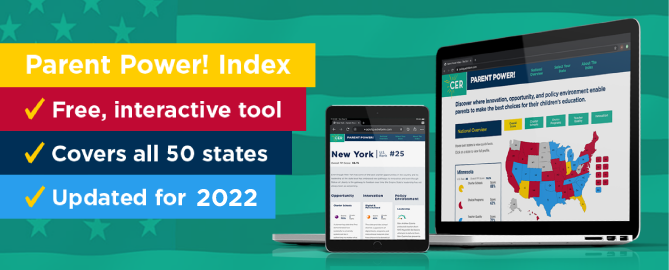How Teachers’ Unions Became the Paper Tigers of Education Reform
Written by Jeanne Allen, Founder and CEO of the Center for Education Reform
The Chinese term “paper tiger” (zhilaohu) describes someone who appears to have power but who is actually weak and conquerable. It’s a perfect description of the nation’s largest teachers’ unions, something to bear in mind when National Education Association President Lily Eskelsen García speaks Friday at a National Press Club luncheon in Washington.
Although the NEA and its smaller rival, the American Federation for Teachers, have long used political donations, political intimidation, and organizing to control Democratic Party education policy nationwide, they’re the very embodiment of a paper tiger.
The latest evidence of their vulnerability is Illinois’ education funding compromise, signed into law last week, which has huge national ramifications. The bill was adamantly opposed by teachers’ unions, yet their opposition crumbled as Republicans and Democrats came together to boldly improve Illinois’ education system.
Since 1987, when then-U.S. Secretary of Education William J. Bennett described Chicago public schools as the worst in the nation, little to no education reform has been enacted there.
Deep-blue Illinois has long been dominated by the Democratic Party and few institutions wield as much control in Democratic politics than teachers’ unions. And as a result, Illinois has been impervious to education reforms happening in every other surrounding state.
That all changed last week. The bipartisan agreement created Illinois’ first private school choice program, aimed at helping low-income and working-class families attend a school of their parents’ choice.
The agreement also addressed equitable funding for public charter schools, taking the innovative schools of choice from 75 percent of per pupil funding to 90 percent. Finally, the bipartisan law created a new funding formula to benefit traditional public schools and fund teacher pensions.
What’s most telling about the teachers’ unions defeat in Illinois is that this is not a unique story, but that it’s taking place in a state they would have never dreamt of “losing.” After all, the AFT was founded in Illinois. The reason for teachers’ union decline in influence is rooted entirely in its status as a paper tiger.
Over the course of the past 30 years, teachers’ unions have become increasingly political and even within their sole support for Democratic candidates, they strongly oppose any dissent.
The NEA once called on President Barack Obama to fire his secretary of education, Arne Duncan, a native of Illinois, claiming, “He’s destroying what it means to teach, what it means to learn.” When then-presidential candidate Hillary Clinton spoke at the 2016 NEA convention and referenced “charters,” she was booed.
Like many paper tigers, the unions’ bark is always bigger than their bite.
In May, teachers’ unions lost a series of major races in another deep-blue state in a deep-blue community — the Los Angeles Unified School District. Pro-public charter candidates secured their first-ever majority on the LAUSD school board, with upsets that included defeating the union-supported school board president.
Several years ago in Wisconsin, another state dominated by union politics, Gov. Scott Walker pledged to expand school choice and advocated for a series of reforms as part Wisconsin Act 10.
The teachers’ unions (along with other public sector unions) protested relentlessly, but not only was Walker able to expand education options in Wisconsin, his Act 10 was passed and he would later go on win re-election twice, once as part of a recall and later re-election.
Within the education arena, the key to overcoming a paper tiger is simple: Remain principled and always put students first. That’s precisely what Gov. Bruce Rauner, R-Ill., did in the weeks leading up to adoption of the final school funding bill.
He saw the possibilities and worked with the legislative leadership to understand that accepting the status quo as the state has done year after year was untenable. And, as a result of bold leadership, pragmatism prevailed and Republicans and Democrats came together.
In the end, the union showed its inability to repel principled positions, and a bipartisan majority created substantive, structural changes in education in Illinois that will dramatically improve lives for millions of students.
Governors and legislative leaders from across the country should take note – success is possible, even in the face of teachers’ unions.
To date, public charter laws and private school choice laws continue to attract support from both parties, from conservatives who oppose the education monopoly, and liberals who are tired of blindly supporting the teachers’ union agenda at the detriment of children. It happened in Wisconsin, Florida, California, New York, and now Illinois.














